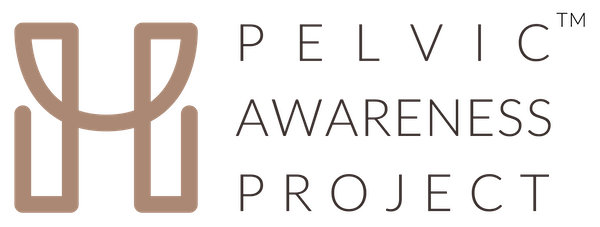We don’t think much about how our bodies operate when everything is working fine.
When we have an issue, however, it causes us to ask questions. If you’re suffering from a bladder concern, for instance, you may be asking yourself how much urine can the bladder hold?
Let’s explore this key body organ, which is easy to forget when systems are “go,” but can dominate our thoughts and impact our quality of life when there’s a problem.
Your Body’s Filtration System
The bladder is part of your urinary system, which serves a key bodily function by filtering your blood and creating urine as a waste by-product. Along with the bladder, the organs of the urinary system also include the kidneys, renal pelvis, ureters, and urethra.
Your body converts what you eat and drink into energy. Once your body has taken the components of food that it needs, the waste products are left behind in the bowel and in the blood.
The kidney and urinary systems work together to eliminate the liquid waste called urea, and to keep water and other chemicals like sodium in balance. Urea is removed from the body through the urethra, along with water and other wastes in the form of urine.1
How Your Bladder Works
The bladder is a triangle-shaped, hollow organ located in the lower abdomen, held in place by ligaments attached to other organs and the pelvic bones. As part of the urinary system—our body’s “sewage treatment plant”—the bladder carries out those substances that we no longer need.
As it fills, the bladder expands like a balloon. Nerves in the bladder wall detect that expansion, and send a signal to your brain, letting it know that your bladder is full and it’s time to empty it.
When you get to the bathroom, the muscles in your bladder wall tighten to squeeze the urine out of your bladder. That works in conjunction with the sphincter muscles at the base of your bladder, which relax and allow the urine to flow out through your urethra.2
How Much Urine Can the Bladder Hold?
If it seems like you have to pee often, you are probably wondering how much urine your bladder can hold.
For women, the urinary bladder can typically store up to 500 ml of urine, while men’s bladders can hold 700 ml. You usually feel the need to pee when your bladder has between 150 and 250 ml of urine in it.2
Put another way, the average adult female bladder holds about two cups of urine, and you start feeling that first urge to pee when it’s at one cup. As our bladder muscles stretch, it gets to a certain level where we start planning a visit to the bathroom.
That means once the urge is strong, we have time to get to a bathroom, sit down on the toilet, and relax and pee. We should be able to get there in time, and we shouldn’t have to push to pee.3
What Can Go Wrong With the Bladder
That’s the case when everything is going well, but problems can arise when it comes to your bladder.
Some of those issues are related to our pelvic floor, the muscles and ligaments that hold our pelvic organs in place and help control functions like peeing and pooping. Other issues are related to female anatomy.
Let’s explore some of the common bladder issues impacting women.
Urinary Incontinence
If you can’t hold in your pee, or it leaks when you don’t expect it, you may have urinary incontinence. This happens if the sphincter muscle stops working properly and it can no longer keep urine in the bladder, such as when the pelvic floor muscles are weakened.2
This loss of bladder control can take different forms, and range in its severity:
- Stress incontinence happens when you exert pressure on your bladder, for instance by coughing or sneezing.
- Urge incontinence—also known as overactive bladder—is when you have a sudden, intense urge to urinate followed by an involuntary loss of urine.
- Overflow incontinence is a frequent dribbling because your bladder doesn’t empty completely.
- Some people suffer from more than one type of incontinence.4
Studies on urinary incontinence place the prevalence among women as high as 44%.5 It’s the most common pelvic floor issue among women.
Bladder Prolapse
A prolapsed bladder, also known as a cystocele, is when the supportive ligaments and muscles of your pelvic floor—which hold your bladder in place and help it function—are weakened.6 This allows your bladder to sag into your vagina, one form of pelvic organ prolapse. Prolapse is another common pelvic floor issue suffered by many women.
The Reality of our Anatomy
Women have a shorter urethra that ends above the opening of the vagina, so it’s easier for germs from the anus to enter their bladder. That’s why conditions like urinary tract infections (UTIs) are more common in women.2
Another bladder issue that some women suffer from is called interstitial cystitis, a disorder in which the bladder is overly sensitive, causing pain and the need to pee up to 60 times a day. The reasons for the condition, including typical markers such as an infection, can’t be found.
When To See A Doctor
If you suspect issues with your bladder, it’s worth seeing a doctor for diagnosis and proper treatment. Some women, for instance, think incontinence is expected after childbirth, or is a normal part of aging, which it’s not. Incontinence can be treated.
You should see a doctor if you suffer from leakage, or from an increase in nighttime urination. You should also get checked if there’s an increase in urgency, or frequency of trips to the bathroom. If every trip to the toilet feels like a race, or if you need to urinate more than 10 times a day, you should get tested. You could have a bladder infection, a UTI, an overactive bladder, or another condition such as diabetes.
Another signal to get to the doctor is bladder pain. If you have pain just behind the pubic bone, or in the urethra, you could have a UTI, or interstitial cystitis, or another condition.7
Issues With Your Urine
You should also watch your urine for signs of problems. Normal, healthy urine is a pale straw color or transparent yellow color.
Some foods can change the color of your urine, like B vitamins, which can make urine bright; or beets, which can make your urine pink. There should be minimal to no odor, unless you have eaten something that results in a strong smell, like asparagus.3
Here are some common signs there may be a problem:
- Darker yellow urine, or urine the color of honey usually means you need more water. Proper hydration results in lighter colored urine1
- An even darker, brownish color may indicate a liver problem or severe dehydration1
- Pinkish or red urine may mean blood in the urine1
- Cloudy or strong-smelling urine could suggest you have a UTI, especially if it’s accompanied by burning, frequent urination or achiness around the pubic bone.7
Seek medical attention if you notice any changes in your urine.
Overall Pelvic Health
Our pelvic health is important, and being proactive can help. For instance, performing Kegel exercises on a regular basis will contribute to your health by keeping those important pelvic floor muscles strong.
Kegels, or pelvic floor exercises, are done by contracting your muscles in the same way you do to hold in pee. They should be contracted for three seconds, followed by fully relaxing the muscles for three seconds. If you can work up to 10 to 15 repetitions each time you do Kegels, and perform them up to three times a day, you can keep your pelvic floor healthy.
Research has proven that pelvic floor exercises help keep pelvic floor muscles “fit,” and can be used as an effective treatment, for instance, for women suffering with stress urinary incontinence.
They can also be preventative, keeping those muscles from getting weak, giving you better control over your bladder and bowels, and perhaps extending the time between bathroom breaks. Kegels are a valuable addition to a daily routine for women of any age.
To properly perform Kegels, you can use a tool like the Gynesis pelvic floor trainer shorts. These use exclusive Multipath Technology to deliver targeted muscle stimulation to strengthen your pelvic floor. It’s a solution that has been cleared by the FDA and is designed to be comfortable for everyday use.
See A Doctor
If you’re having problems with your bladder, see a doctor for diagnosis, treatment and advice. Use our Physician Finder to find a doctor near you with expertise in women’s health who can answer your questions about your bladder. You can also seek guidance on other women’s pelvic health issues, like pelvic floor muscles exercises, a positive addition to your workout regimen.
















